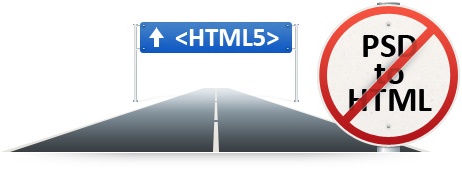HTML5 - The End of PSD to HTML Slicing Providers? - Is HTML5 the end of PSD to HTML companies? Or new HTML standards only strengthen the role of professional PSD to HTML conversion and will result in specific PSD to HTML5? |
|
HTML5 - The End of PSD to HTML Slicing Providers? - Is HTML5 the end of PSD to HTML companies? Or new HTML standards only strengthen the role of professional PSD to HTML conversion and will result in specific PSD to HTML5? |
|
Business Related Topics...
Computer Related Topics...
Entertainment, Recreation & Sports Related Topics...
Health & Fitness Related Topics...
Home & Family Related Topics...
Shopping Related Topics...
Would you like to submit articles to our site? Have a question or a problem?
You are here: DIME Home > Programming and Scripting > HTML5 - The End of PSD to HTML Slicing Providers?
Is HTML5 the end of PSD to HTML companies? Or new HTML standards only strengthen the role of professional PSD to HTML conversion and will result in specific PSD to HTML5?
Author: Serge Lavryk
Date: Oct 18, 2010 - 11:20:32 AM
In 2009 the World Wide Web Consortium (W3C) decided to concentrate their efforts on HTML5, a new revision of HTML, rather than XHTML2. HTML5 is strongly supported by Apple, Opera, Mozilla, Microsoft, Google and other leading IT companies and web browser developers. All this means that HTML5 is becoming a mainstream of the Internet.
Among peculiarities of HTML5 there are backwards compatibility and forbearing error handling. In other words, with HTML5 websites written in previous versions of HTML/XHTML-CSS will not need an urgent update to be correctly displayed by even the most modern browsers.
 HTML5 - The end of PSD to HTML companies? |
HTMLcut.com is a PSD to HTML
and PSD to WordPress / Drupal / Joomla company that has helped a lot of designers and web agencies to save money and time on conversion their designs into xHTML/CSS code.
| Business & Marketing | Computers & the Internet | Entertainment | Health & Fitness |
Home & Family |
Shopping |
Sports |
Travel |
Would you like submit your articles and have them approved on a priority status? Find out more about how you can become a Priority author for pennies a day! Click here.
Disclaimer: Dime-Co.Com is an online information article and video article network. All articles, video articles, comments, and other features herein are for informational purposes only and are provided "as is" without warranties, representations or guarantees of any kind. The views and opinions expressed in an article, comments, links or blogs are the author's own, and not necessarily those of dime-co.com's owners. For full disclaimer, please read our TOS.
